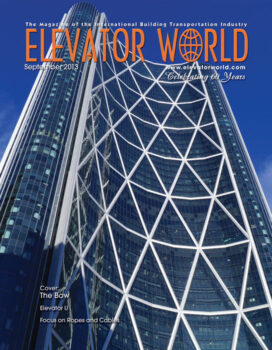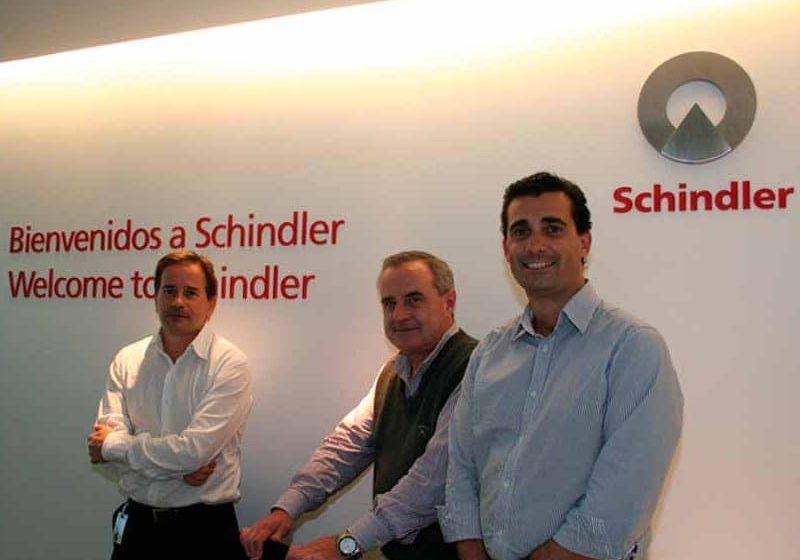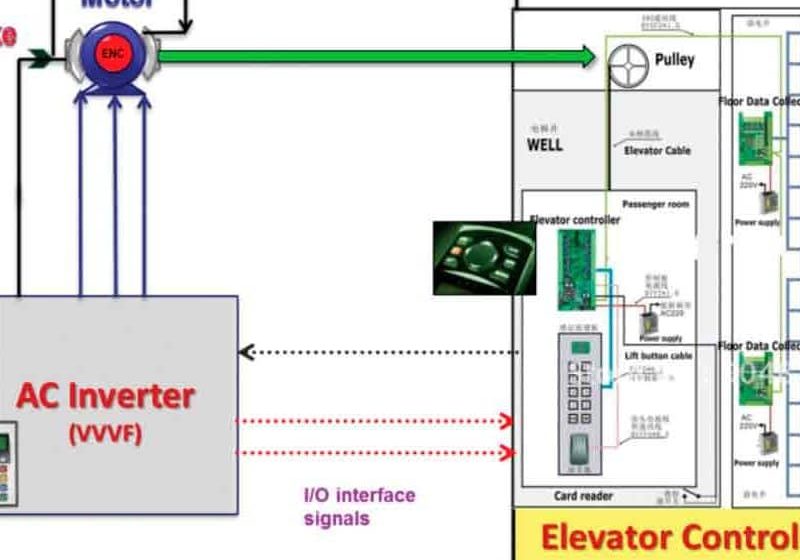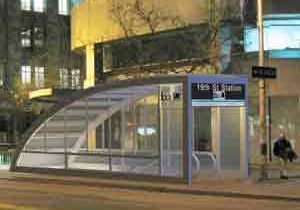South Korea: Asia’s Growing Giant
Sep 1, 2013
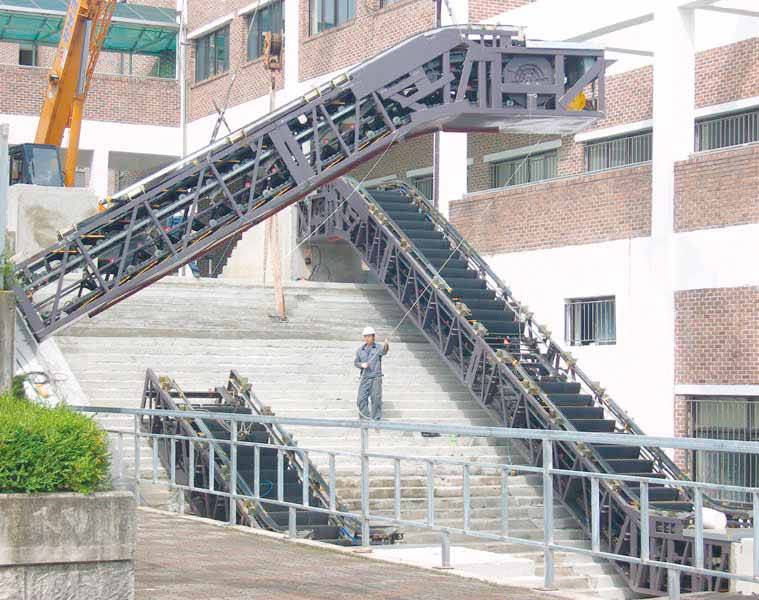
With the 12th-largest economy in the world,[1] South Korea has enticed all the major elevator companies and many independents to operate within its borders. According to Ilsub Choi, general manager of the Korea Elevator Safety Institute’s (KESI) Department of External and International Affairs, South Korea will have approximately 500,000 elevators in operation at the end of this year, ranking eighth in the world in terms of the number of elevators running. Also, an estimated 25,000 new elevators are installed every year in the country, making it third in the world (behind China and India) in terms of newly installed elevators per year.
The elevator industry plays an important role in the national economy. Choi said it totals USD2.5 billion (aggregating manufacture, installation and maintenance). The sector’s statistics include 95 manufacturers, 350 installation contractors, 850 maintenance companies and 20,000 employees. New technologies are being applied to elevators very quickly. Jay Popp, executive vice president International for Lerch Bates Inc., adds that the quality of the country’s products is very high. On his recent visit to Incheon and Seoul, Popp was impressed with what Hyundai Elevator had done in the country since 1984 (ELEVATOR WORLD, July 2013). He reports that “they’ve done their homework” and created a “pretty serious product” by paying attention to global technology standards and what the industry expects as it expands into the machine-room-less elevator segment.
As political tension with China has declined, Chinese elevator companies have entered the market. One example is Canny Elevator Co., Ltd., which has been one of the largest suppliers of the Korea Subway project since 2006. To date, it has supplied more than 400 escalators to South Korea.[2]
Choi describes the country’s elevator industry as stable, because the replacement of existing elevators required every two to three decades maintains continuous demand for new installations. Elevator maintenance in the form of repairs and the replacement of components supplement this part of the industry.
Events and Safety Promotion
The South Korean government and KESI hosted the Korea Lift Safety Expo in October 2012 and plan to continue it on a biannual basis. Foreign businesses are encouraged to attend, and support for companies participating in overseas lift expositions is provided. As an inspection agency, explained Choi, KESI endeavors to support businesses, holding the view that it is necessary to promote safety systems and public awareness to ensure safety.
KESI was formed in 1992 upon the establishment of the Safety Control of Elevator Facilities Act (SCEFA) for the purpose of the systematic management of elevator safety. SCEFA requires that, upon the installation of an elevator, the owner must request a specialized inspection agency for an acceptance inspection. Also, whenever an accident occurs or major components are replaced, the elevator is subject to another inspection. A monthly periodic check by a qualified specialist must also be performed, and a regular inspection by a specialized inspection agency once every year is also required. Finally, an elevator is subject to a precision safety inspection 15 years after its installation date.
The National Elevator Safety Information Center (NESIC) was established to improve safety of the country’s elevators and speed the rescue of entrapped passengers. It facilitates access to such information regarding elevators as installation year, manufacturer, accidents and incidents (if applicable) and inspection status for individual units. As part of the center’s data-gathering program, all industry equipment is required to have a unique number affixed to it. This helps NESIC systematically manage the equipment and helps prevent the illegal installation of it. Quick Response Codes enable smartphone users to access a variety of information and are used to aid the rescue of trapped passengers.
Outlook
According to the CIA World Factbook, South Korea has demonstrated incredible growth and global integration over the past 40 years. It has sustained a gross domestic product (GDP) of more than US$1 trillion since 2004. That amount is now US$1.64 trillion. After the Asian financial crisis of 1997-1998 exposed longstanding weaknesses (including high debt/equity ratios and short-term foreign borrowing) in South Korea’s development model, the country’s GDP recovered by 9% in 1999-2000, largely due to such economic reforms as greater openness to foreign investment and imports. [1] In 2010, it became the first country to host the Group of Twenty Finance Ministers and Central Bank Governors (G20) Summit that was not a member of the original G7.[4] Its economy has been recovering from the more recent economic downturn since the third quarter of 2009, with an estimated 2011 unemployment rate of only 3.2%. Long-term challenges to South Korea’s economy are foreseen as a rapidly aging population, an inflexible labor market and heavy reliance on exports, which comprise half of its GDP, which increased only 2% in 2012.[1]
A combination of foreign and domestic forces make for an increasingly dynamic economic and political environment in the nation, says Deloitte Research. It also reports that risks are high due to the regional and political landscape and export dependence. As with any country in today’s economic times, the extent of global economic recovery will be a large influence on its growth prospects.[3] However, economic growth in 2013 has thus far been favorable: quarterly GDP growth attained a two-year high in the first quarter, aided by strong construction, investment and export sectors. An increase in yearly GDP growth is to see 2.5-3% for 2013, with an increase of 3.5-4% in the following two years.[5]
Popp notes high activity in the South Korean market in terms of developing buildings. Its high-rise market is expanding, particularly in the form of internal consumption, as large, growing corporations such as Samsung and Hyundai have built many structures for their own use over the last 10 years. Urbanization is trending, fueling the long-awaited construction and occupation of supertalls that have been in design stages for the past 10-15 years. Though Popp does not consider the high-rise explosion taking place in the country as obvious as that of China and India, he cites “a lot of energy in South Korea and Southeast Asia as a whole.”
References
[1] Central Intelligence Agency. The World Factbook. “Korea, South” (www.cia.gov/library/publications/the-world-factbook/geos/ks.html).
[2] Shanghai Elevator Trade Association. “Canny Elevator Appeared in Lift Expo Russia 2013” (www.sh-ea.org/En/news/New.aspx?id=3535).
[3] Deloitte Research. “Asia Pacific Economic Outlook” (www.deloitte.com/view/en_GX/global/insights/deloitte-research/economic-research/52d1d8d3d40f4310VgnVCM1000001a56f00aRCRD.htm).
[4] PBS Newshour. “South Korea Welcomes Leaders for G-20 Summit” (www.pbs.org/newshour/rundown/2010/11/south-korea-welcomes-leaders-for-g20-summit.html).
[5] Deloitte Research. “Asia Pacific Economic Outlook June 2013: South Korea” (dupress.com/articles/asia-pacific-economic-outlook-june-2013-south-korea/).
Get more of Elevator World. Sign up for our free e-newsletter.

